In addition to my recent photo gallery about the mañana mañana vibes of Paramaribo, today I want to share my #1 day trip in the capital of Suriname: cycling in and around Paramaribo! This exploration tour was even the cheapest activity I’ve done in Suriname.. as all I needed was a bicycle (and loads of sunscreen, but more about that later)!
As you may know, Dutch people are extremely fond of getting around by bicycle. And albeit not as vigorously, this tradition clearly has been embraced overseas as well, in the former Dutch colonies. In both Suriname and Curaçao I encountered quite a few bicycle rental agents along the way.
Although in Suriname the roads aren’t exactly made for cycling – I mean, it’s not like there’s a bicycle path or anything out there and you always have to be on the lookout for potholes, plus you need to reconsider your orientation as they drive on the left in here… – but I still very much loved my day trip cycling around the plantations outside of Paramaribo. And I’d absolutely recommend you to do the same if you’d ever visit the area.
So what about safety?
Unfortunately traffic can be a bit of a hassle in Paramaribo. However, most of the route I took was on the other side of the Suriname river (look at the map at the end of this article if you already want to see where this is about) and once you’re out of Paramaribo’s center traffic is slowing down quite a bit.
Aaand, another plus: the roads are as flat as a pancake around Paramaribo, which is pretty convenient if you’re out there sweating like a sinner in church in that gruesomely shining sun!
Apart from traffic, I still was a bit wary about cycling around on my own in the area to be honest. I checked with several people if it would be okay for me to go by myself. My Airbnb host, the staff of Zus&Zo (a restaurant in Paramaribo) and a guide I’d met earlier during my stay in Paramaribo didn’t foresee any problem. And with a bit of common sense it totally was. I only felt unsafe once, when a car was following me for a minute on the highway, but as there were other cars behind him he was basically forced to pass me by shortly afterwards. Buh-bye.
So in general if you’re out there as a solo female traveller I’d say; it’s always better to go with someone else, but in case that is not a possibility, just hit the road yourself. And go early (yet, a little after morning traffic) as the sun will be your most fearsome enemy during your cycling trip.
How long does it take?
I personally only did a one day cycling trip from Paramaribo, with three stops in between (Fort Nieuw Amsterdam, Peperpot Nature Park and Hotel Peperpot). This took me a full day, including some 3 – 4 hours of cycling.
As I was on my way I realised it would’ve been even cooler if I’d made this into a multiple day trip. There are quite some former colonial residences along the river where you can stay the night. Some of them you can already find on booking.com.
So if I’d do it again, I’d turn this activity into a 2-day trip for sure. Perhaps even a 3-day trip, just to include more stays and visits to plantations like Frederiksdorp, Leliendaal, Mariënbosch, Hotel Peperpot or Richeleu. And some time to rest in between all that cycling :).
So where to rent a bicycle?
At Zus & Zo, right in front of the Palmentuin (Palm Garden) in the center of Paramaribo! Thé place to go in Paramaribo anyway if you’ve just arrived. I swear, there were so few travellers in Paramaribo at the time of my visit that I had the feeling the staff just knew I was new in town. Zus & Zo is the best place to meet other travellers, or to get your day started with a coffee and brekkie ánd to rent that bicycle.
Bicycle rent for a day is €10,-. Surinamese dollar, Euros and USD are all accepted by the way, but the Euro was the most popular currency at the time of my visit. Also, if you rent your bicycle for a longer period of time it will be significantly cheaper per day. Just so you know.
At this rental agency there are loads of maps (with possible roads to hit) and other brochures, to get you started.
What route to take?
So there are several possibly itineraries.
I personally decided to cycle north of Paramaribo first, to cross the river and to visit the museum of Fort Nieuw Amsterdam (built as a security breach against French buccaneers in the 18th century), to continue my way south to Peperpot Nature Park and to make my way back to Paramaribo via the southern ferry terminal.
I’ll give you a visual diary of my trip in here! ↓
These two picture I made right after I hit the road north from Zus & Zo.
Morning traffic had passed and the road to the tiny dock in the north is just one straight line up along the Anton Drachtenweg. Easypeasy.
I passed some funky, dilapidated beauties. ↑
But most of the road just looked as plain and tropical like this. ↓
It took me something like 30 – 40 minutes to get to the dock. It was still early, but I was already drenched in sweat once I reached the boats.
That reminds me, bring enough sunscreen and water :). You can’t have enough of either in here.
Once at the dock, I was ready to cross that broad and dark Suriname river. However, I got ripped off right away ?. Make sure you’re not making the same mistake in paying the tourist price. I had to pay 6 euros to cross the river, while being on my own. However, just insist that you want to wait to cross the river together others in order to get a lower price. Unless you’re in a hurry and don’t mind a private taxi anyway.
It’s quite common that they make foreigners pay more in Suriname, even though you’re on the same ride. I personally really hate it when that happens.
Anyway, I was able to enjoy the ride along the chocolate milk-like river all by myselffffff. ↑
Dropped off on the other side of the river it was only a 10-minute ride to the Fort of New Amsterdam. I spotted this view when I just got off the boat ↓. Good to see that at least some buildings in Suriname are being kept neat and fresh.
Also, it remains incredible how many religions and backgrounds are blended into one in Suriname. Synagogues, mosques, churches and hindu temples are sometimes literally standing next to one another. With absolutely no quarrels. Of course, this peaceful coexistence has been developed slowly over many centuries, but still it remains an incredible thing to see this is possible.
Back to the route.
Fort Nieuw Amsterdam is located on the edge on the crossing of both the Commewijne River and Suriname River. Completed in 1747, the Dutch meant this post as a defence of the colony against the buccaneers. The military history is still quite visible and the Fort is now turned into an open air museum.
Taking a stroll in this area is rather pleasant. I started with the fortified walls around the fort, where the cannons are still abundant.
Next I walked inlands to the other side of the fort. Over here the former, renovated residences and powder houses are surrounded by a lovely garden filled with lilies, some statues and loads of palms.
Visitors can enter most of these buildings and in everyone of them there’s a little exhibition about life in the former centuries. Note that many information is noted down in Dutch. Personally I think this was the first time ever that my native language proved to be an advantage.
I especially liked the exhibition in the former prison about the different origins of the people in Suriname in here. I learned so much about the melting pot of cultures of the country. I once had a course on racism and colonialism with a partial focus on Suriname in university, but I still had no how many different traces there are to be found in here. The Dutch brought in slaves from West-Africa and afterwards many workers from Asia (after the abolition), such as farmers from East-Holland, Java, Hong Kong, Kanton and India. Their liberal climate regarding religion also attracted worldwide minorities, such as jews.
All that studying made me hungry.
Right outside the open air museum, next to the ticket office, luckily there was a lovely lady selling lunch. I took a box with me of petjil gado gado (lots of veggies and peanut sauce) for something like € 2,- and settled down on one of the benches in the fort.
All fuelled up it was time to hit the road again… all the way south via the Pronckweg!
As all was flat in here and I cycled along many farmlands, intertwined with the occasional palm tree, I felt as if I driving in a mixture of the tropics and Holland. All strangely familiar.
After something like 40 – 60 minutes I arrived at my next stop: Peperpot Nature Park! Time to walk in the shade for once as I had almost melted to the ground by then.
Peperpot park is a popular destination outside of Paramaribo, as it’s easy to reach and very accessible for a walk and yet you have the feeling you’re exploration some remote piece of jungle. This area used to be a coffee and cacao plantation, but after it had been abandoned nature regenerated in here.
Conveniently enough, you can even bring your bicycle in here, as there’s been paved a road straight through the area.
Next to the ticket office there’s a little discovery centrum, which is fun to walk through, but nothing amazing. The real stars in this rainforest are its many inhabitants: iguana’s, white face monkeys, squirrel monkeys, sloths, montezuma oropendola (see their hanging nests in picture one! ↓), toucans and many other birds. Apparently tapirs, ocelots, pumas and jaguars have been spotted in here as well, but you have to be REALLY lucky to spot one of those!
Many inhabitants can be seen along the 1,5 km / 0.9 mile road through the forest. Since it’s so broad, it’s easy to navigate around with a bicycle. Convenient perhaps, if you’re short on time. However, remember that the slower you go in nature, the more you’ll see! Also, the earlier you go in the morning the more you’ll see.
That said, although late in the afternoon I was still able to see many iguana’s, monkeys and birds. As I was the only one in the park, I absolutely enjoyed my time in the jungle.
There are also some little paths that lead straight through the jungle. These can be quite muddy, so make sure to wear sturdy shoes if you want to explore that extra bit of jungle!
At the end of the trail there’s another exit. Located close to the Peperpot Hotel and its restaurant, this is a perfect break before heading back to Paramaribo.
The last bit of the trail took me something like 30 minutes. The end of the day was near and the sky was darkening as well, but I made it to the boats in time while hastening along many dirt roads and curious locals.
I took one of the last boats back to Paramaribo from the terminal, crossing that impressive river once more. A great end of this super cool day!
I hope to come back one day, if only to make the wider loop in the area.
Here’s where to find the spots I visited during my cycling trip!
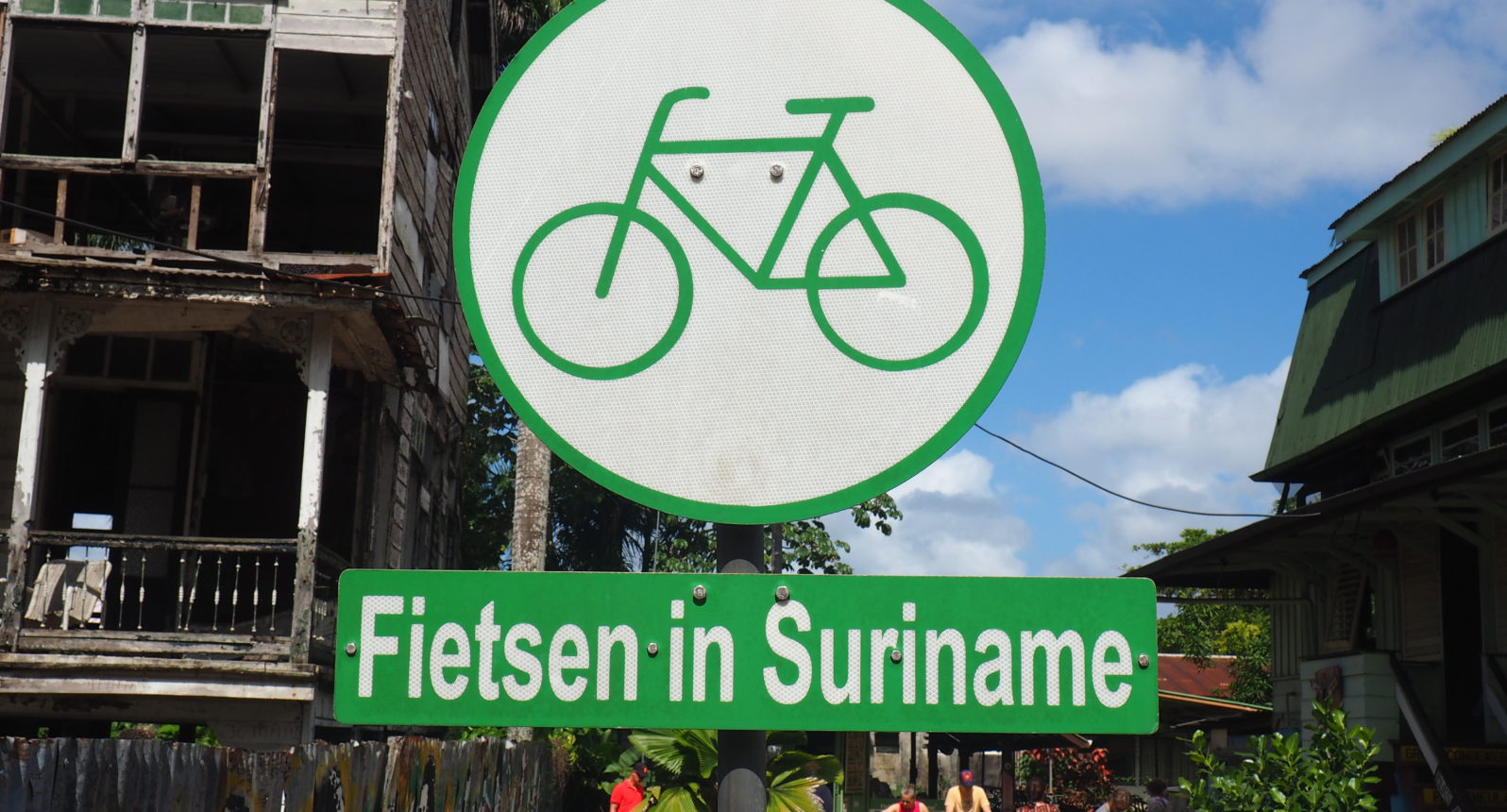
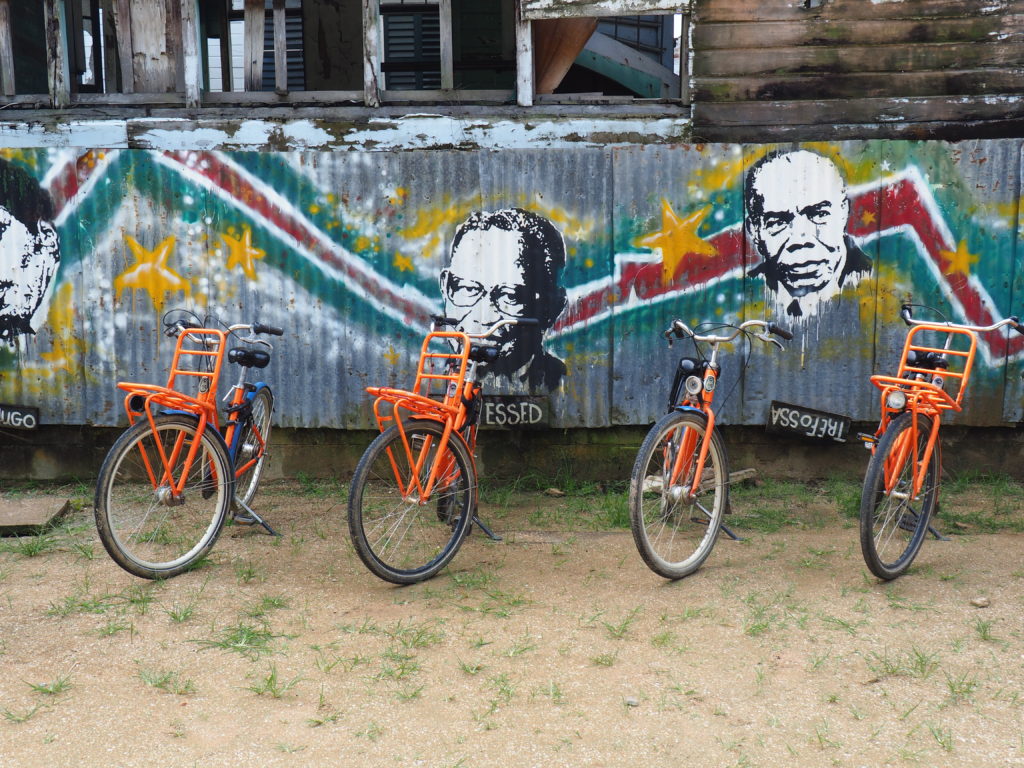
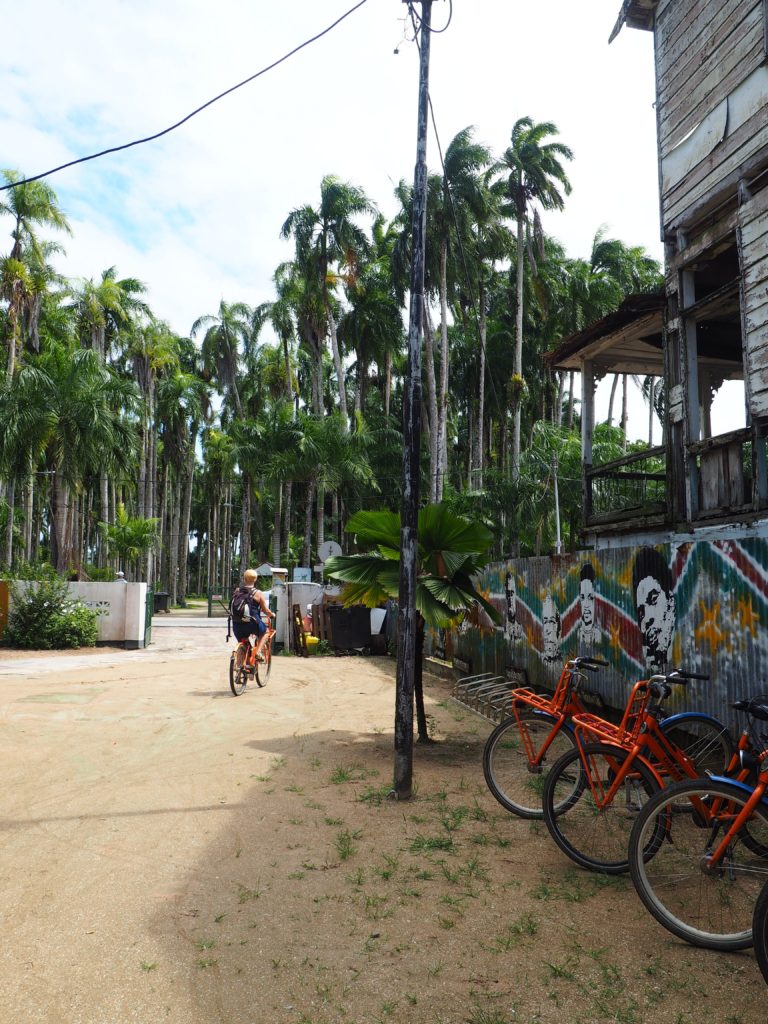
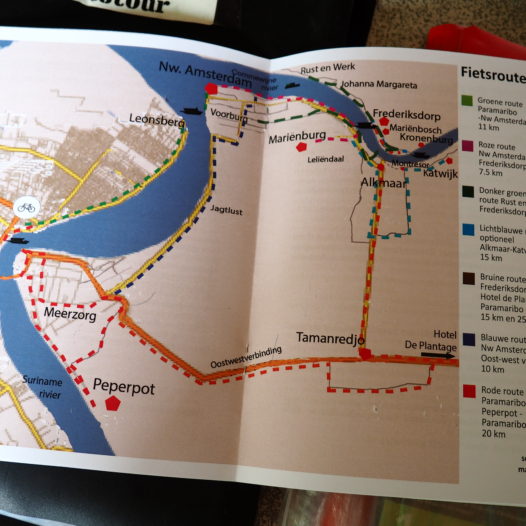
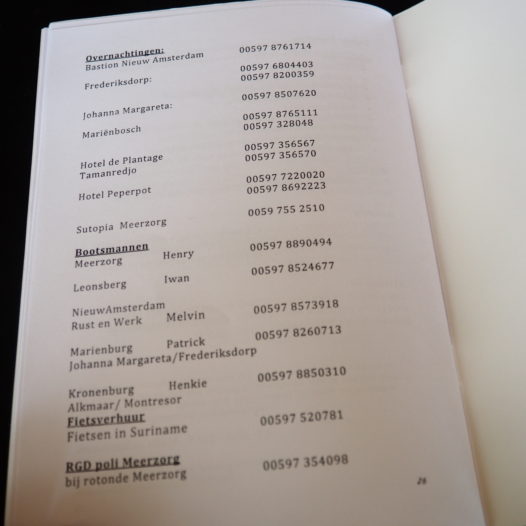
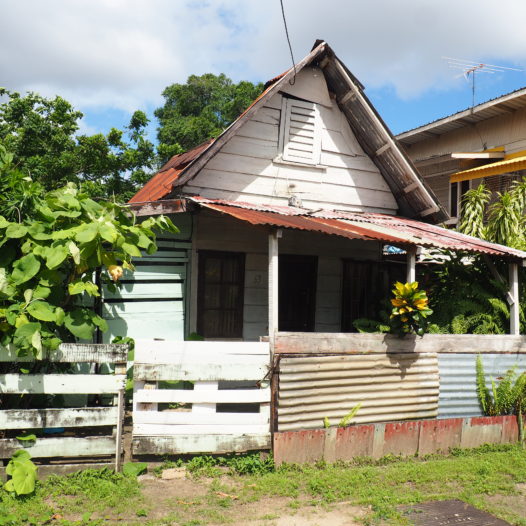
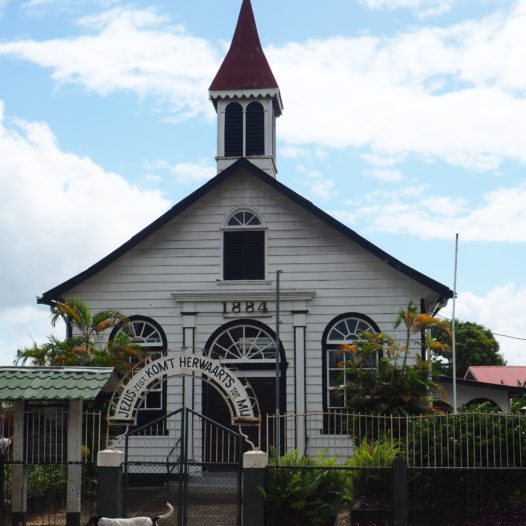
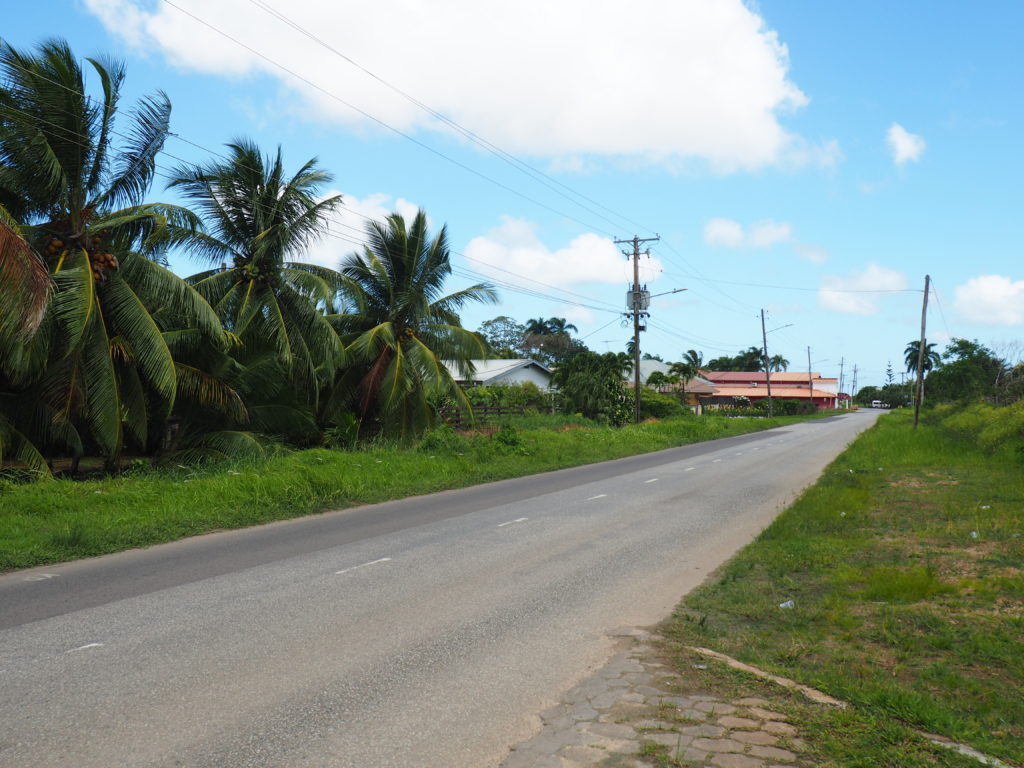
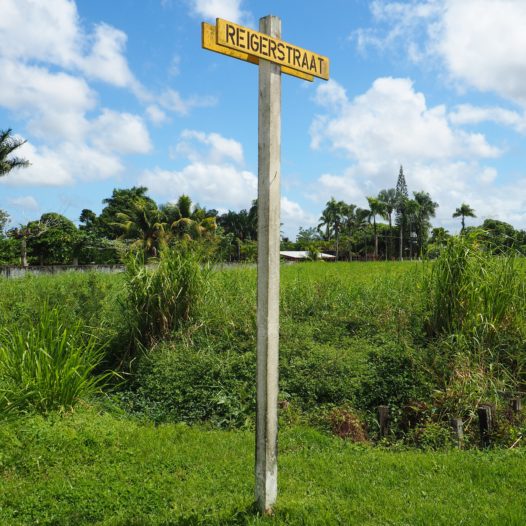
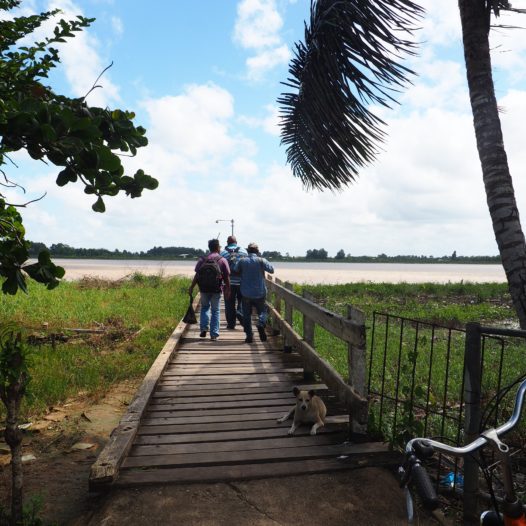
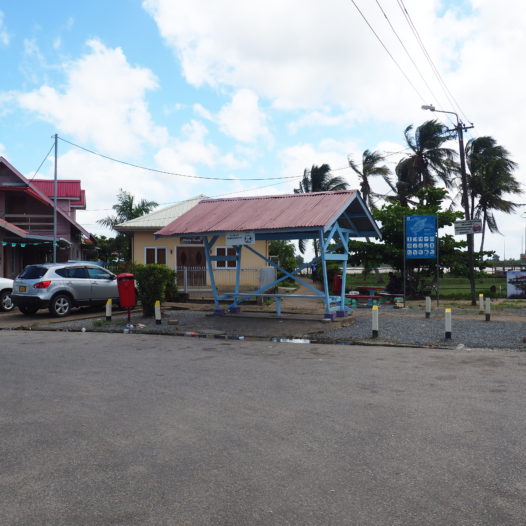
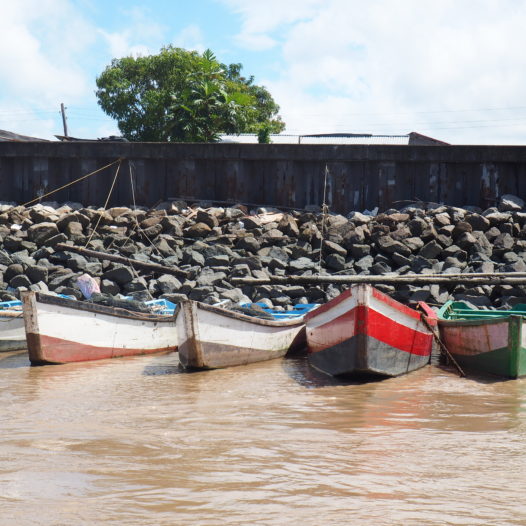
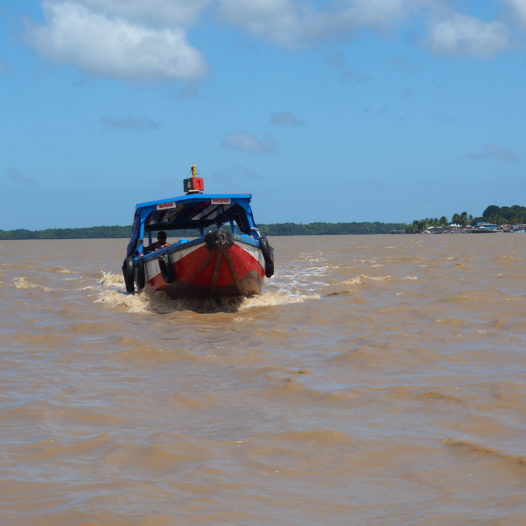
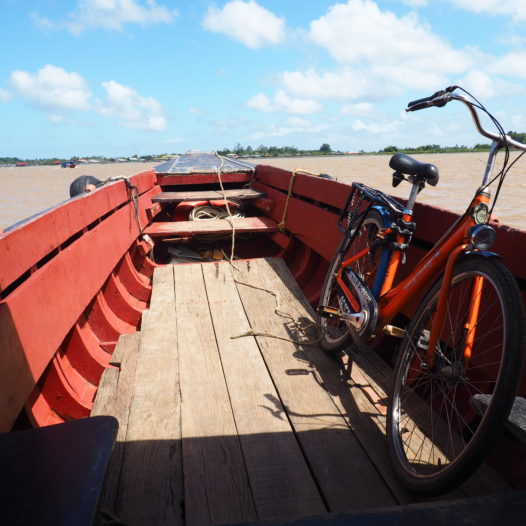
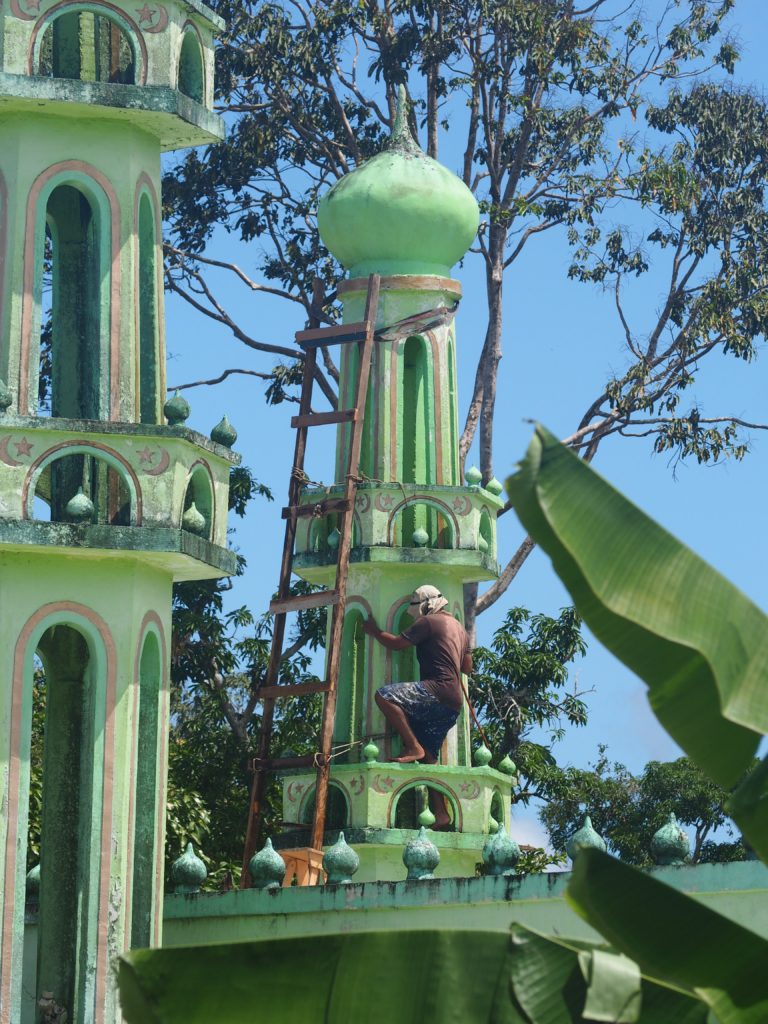
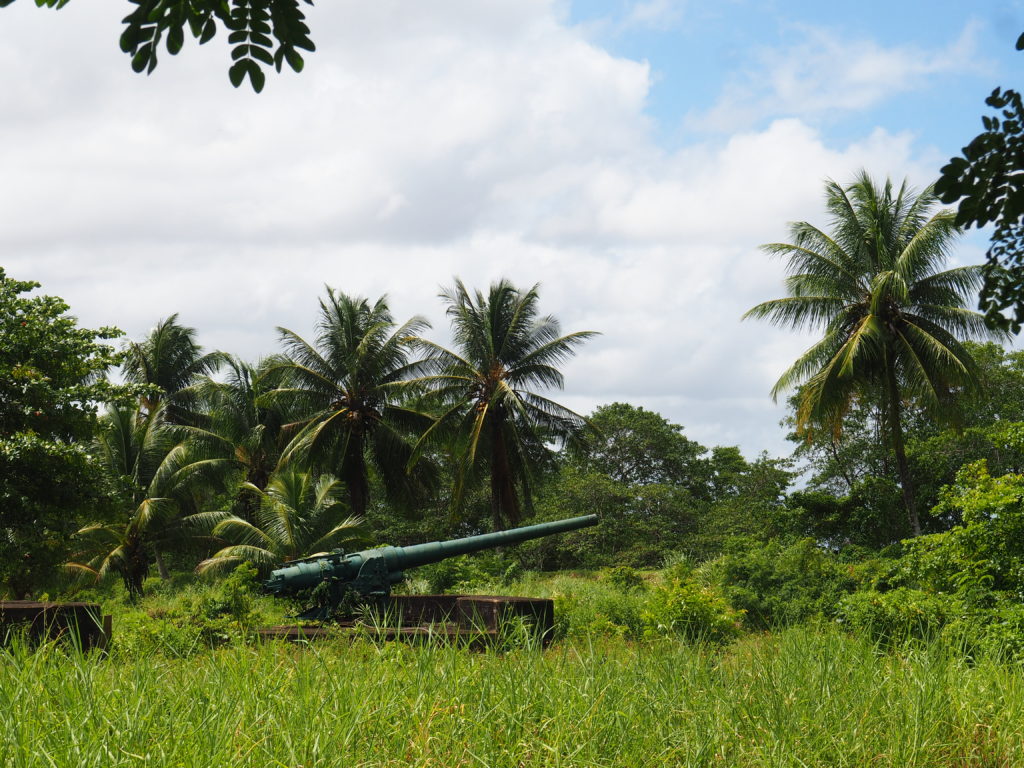
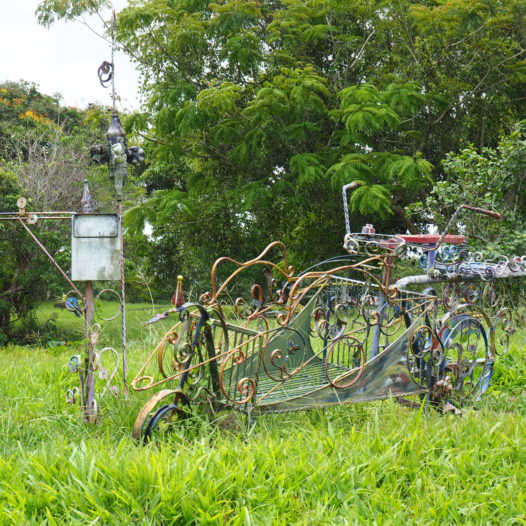
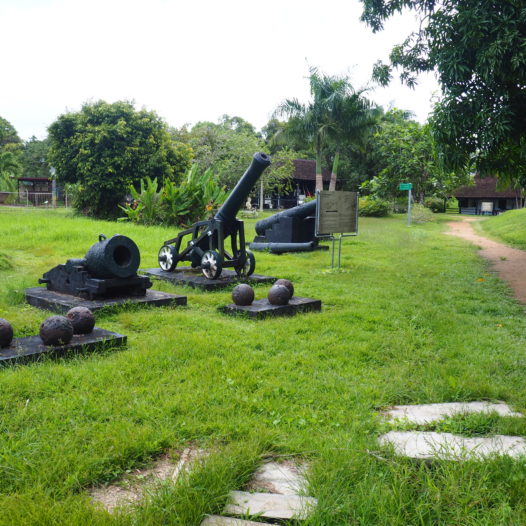
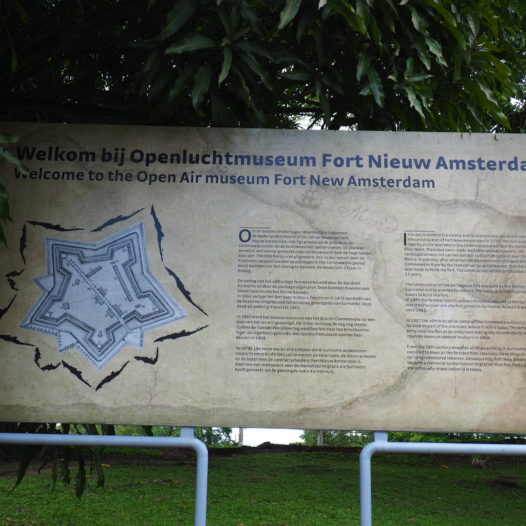
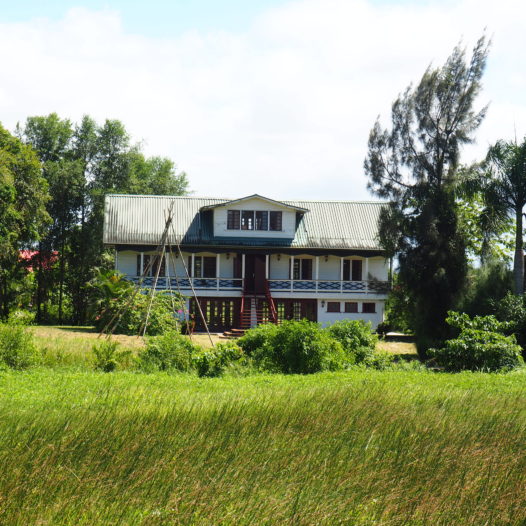
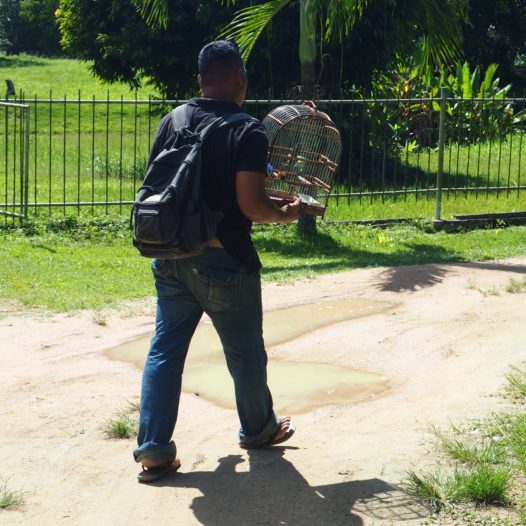
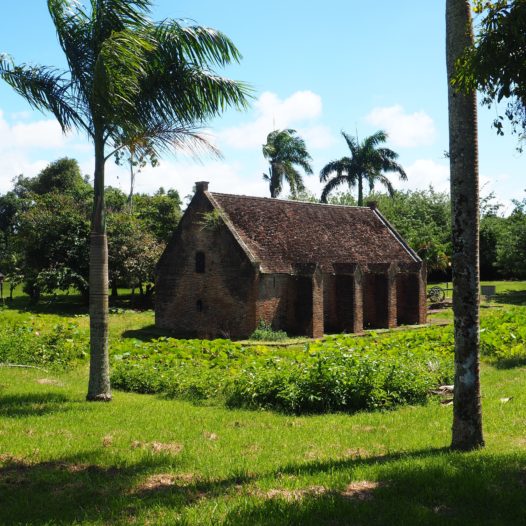
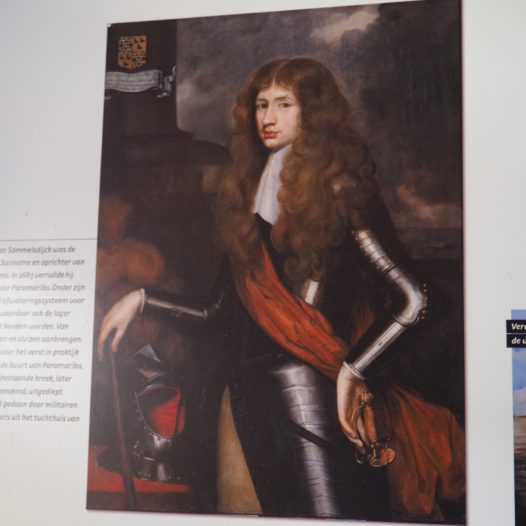
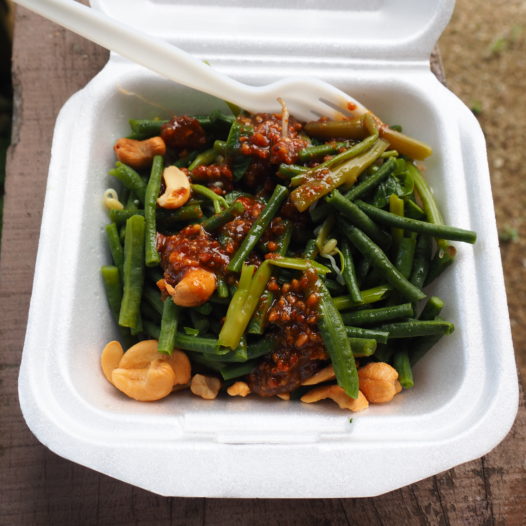
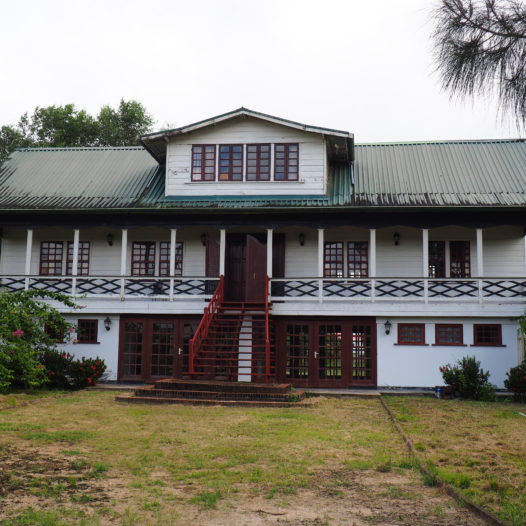
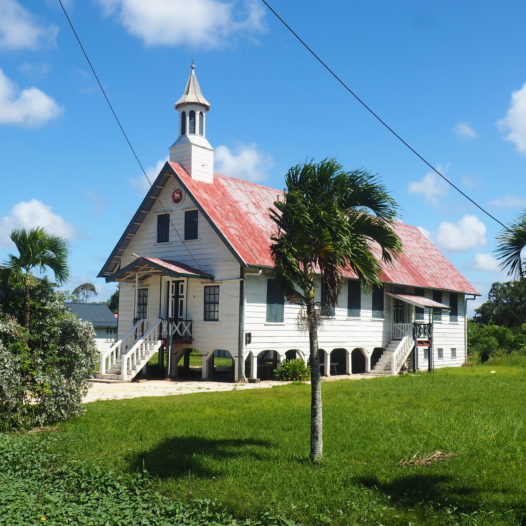
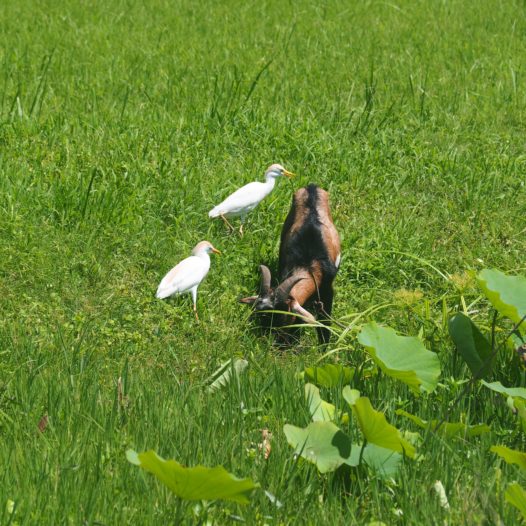
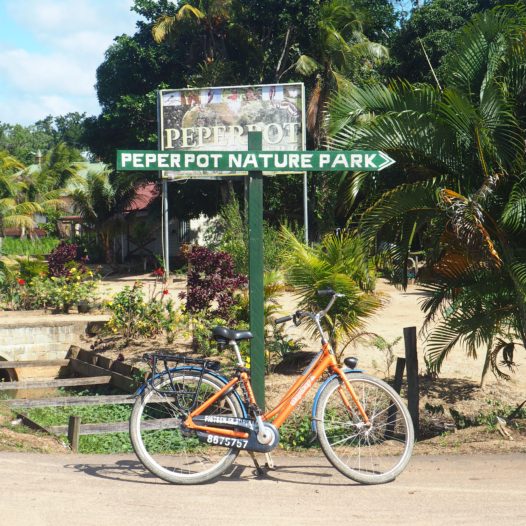
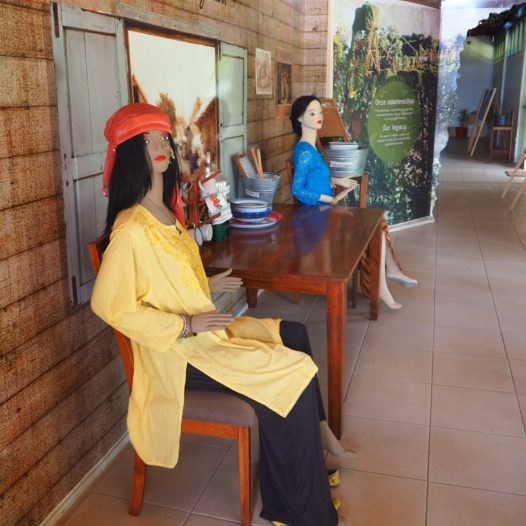
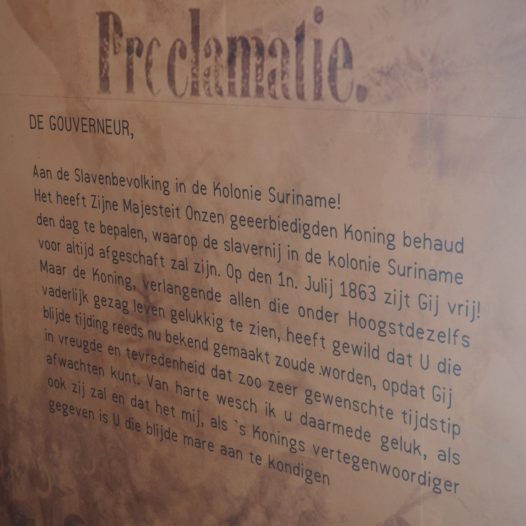
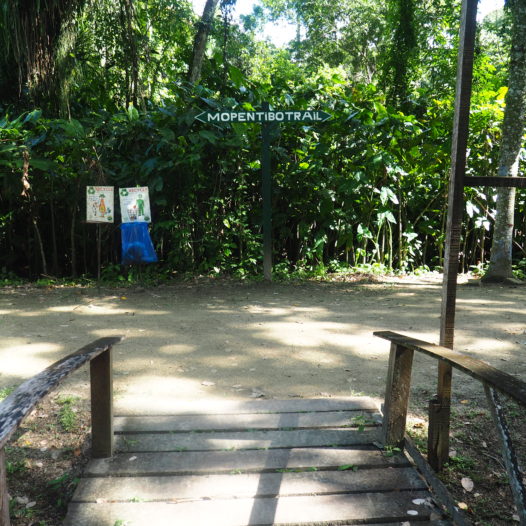
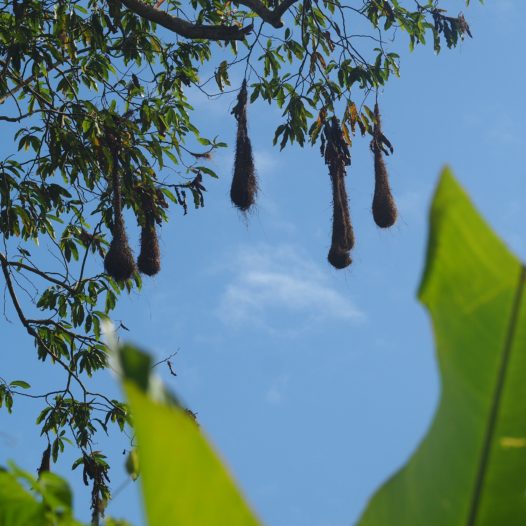
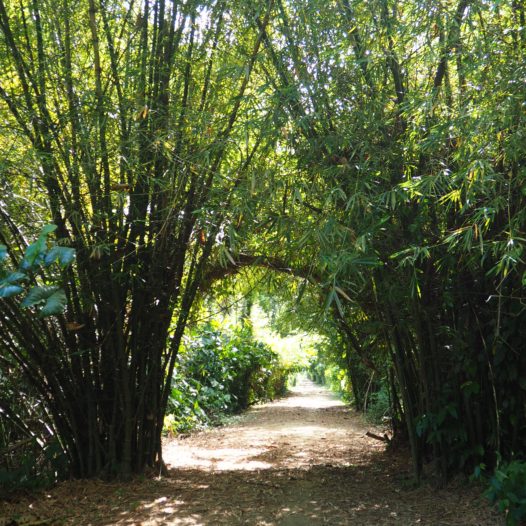
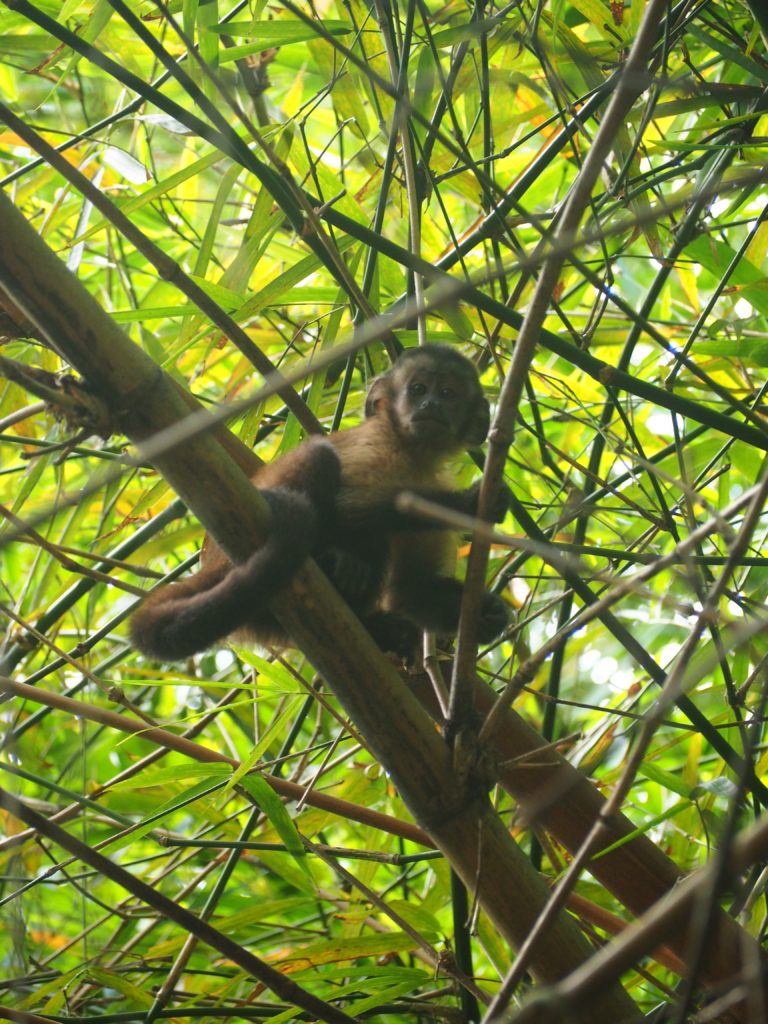
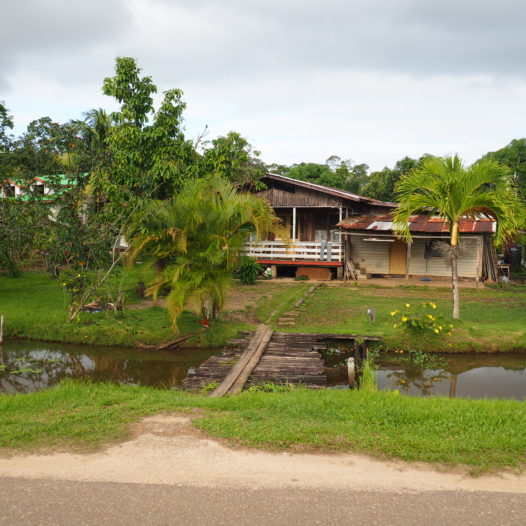
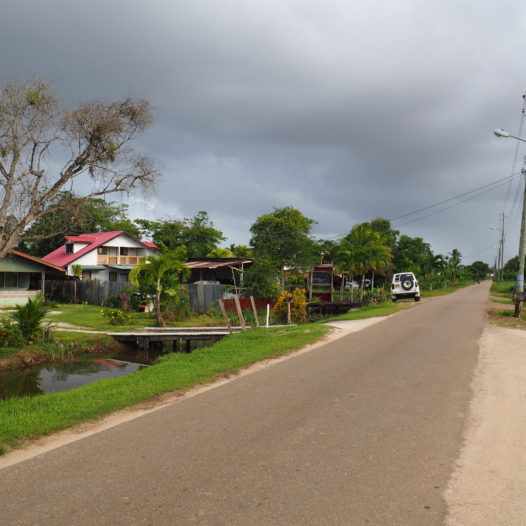
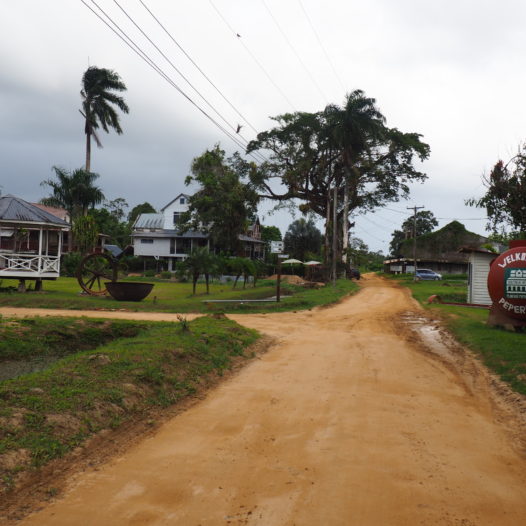
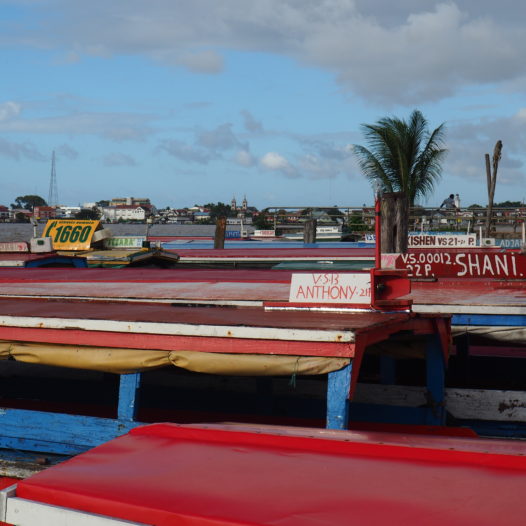
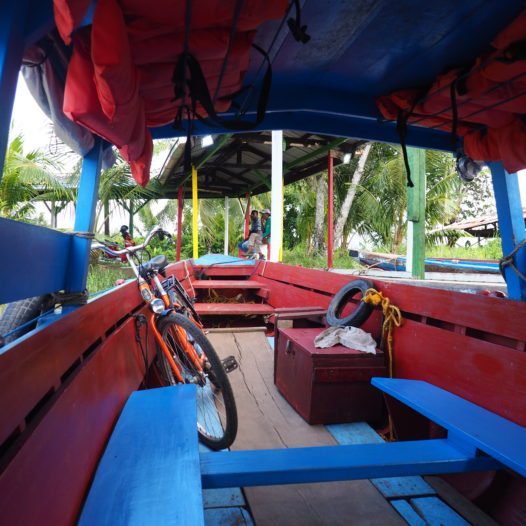
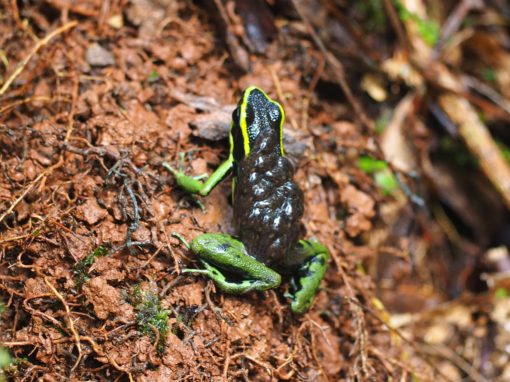
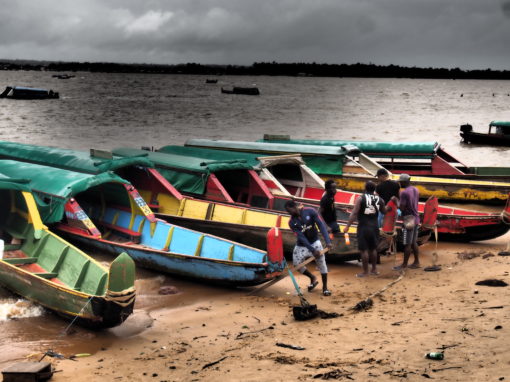
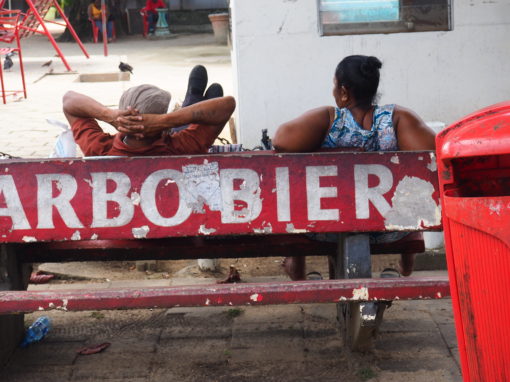

Pingback